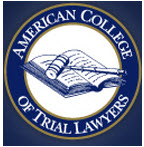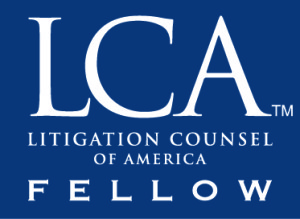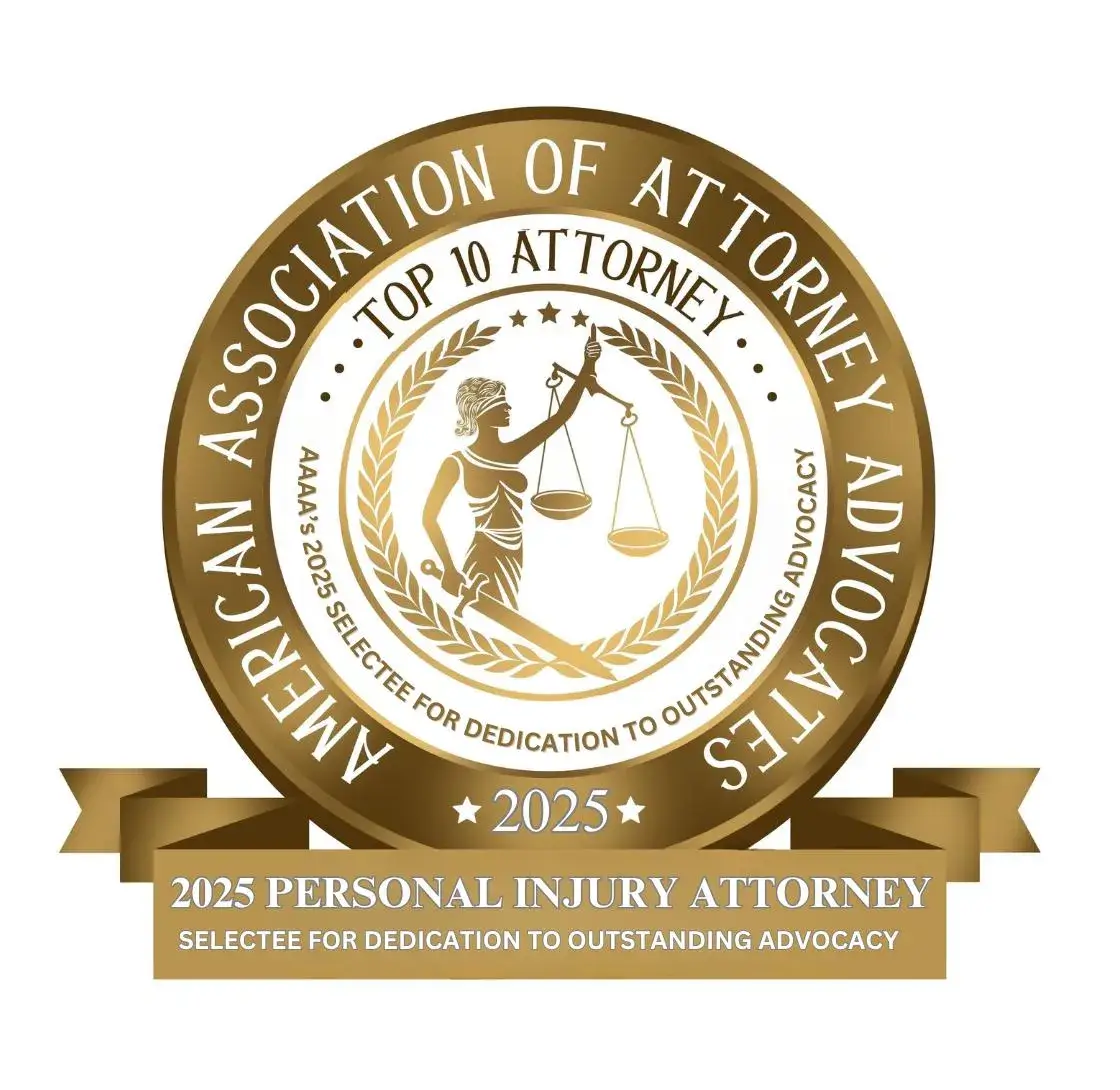Who Is At Fault If A Bicycle Hits A Car?
Who is at fault if a bicycle hits a car often depends on the details. While it might seem logical to assume the cyclist is at fault, the driver can bear responsibility in many cases due to negligence, road behavior, or failure to adhere to traffic laws.
Understanding the complexities involved is crucial to recovering maximum compensation for damages and losses suffered. An experienced bicycle accident lawyer can provide valuable insights, helping cyclists explore compensation options and the best way to move forward after an accident.
Who is at fault if a bicycle hits a car?
Even if a bicycle hits a car, the driver may still be at fault depending on the circumstances. Here’s when liability may fall on the driver:
- The driver opened a car door into the cyclist’s path (“dooring”)
- The driver made an unsafe lane change or turn, cutting off the cyclist
- The driver parked illegally or blocked a bike lane
- The driver was impaired or failed to use hazard lights when stopped
- The driver violated the cyclist’s right-of-way at an intersection
Understanding the Basics of Bicycle and Car Collisions
Cyclists, like drivers, are bound by traffic laws. They have a legal obligation to obey signals, yield to the right-of-way when required, and use bicycle lanes or the far-right side of the road when available. Similarly, drivers must regard bicycles as valid users of the road, affording them the same consideration as other vehicles.
However, what happens when the roles are reversed and a bicycle collides with a car? The assumption might lean toward blaming the cyclist, but that’s not always how the law perceives it. Here are common scenarios where fault isn’t as straightforward as it seems:
- Failing to yield at intersections: Cars must yield to bicycles in intersections when it’s legally their turn to proceed. For example, a car running a stop sign or stoplight can force a cyclist into a collision.
- Sudden door openings (Dooring): One common accident involves drivers or passengers opening vehicle doors into a cyclist’s pathway. A bicycle hitting the door may result in injury or even further collisions, but the vehicle occupant usually holds responsibility for failing to check their surroundings.
- Unsafe lane changes or turns: When drivers fail to signal or notice a cyclist in their blind spot, they can cut off the bicycle, leading to an abrupt reaction and a collision. A cyclist hitting the rear or side of the car in this case could be pinned on the driver’s oversight.
These actions may make the vehicle driver liable for compensation even though the initial contact was the bike hitting the car. Insurance companies often try to use these specifics to shift blame to the cyclists. With the help of an experienced bike accident lawyer, injured parties can fight for the compensation they deserve for the driver’s reckless or negligent actions.
Types of Negligence That Can Make Drivers At-Fault When A Bike Hits A Car
These scenarios highlight how drivers’ decisions can directly impact cyclists’ safety, often leaving them at risk for accidents that could have been avoided. Thoughtful legal approaches and accountability help support safer outcomes for all road users.
Illegal Parking and Negligence
Illegal parking often contributes to hazardous situations for cyclists, placing drivers at fault when accidents occur. Drivers can create obstacles that force cyclists to make dangerous maneuvers by disregarding parking laws. Below are specific examples of how illegal parking can result in driver negligence:
- Parking in no-parking zones obstructs visibility, making it hard for cyclists to anticipate oncoming traffic.
- Blocking sidewalks or crosswalks forces cyclists to venture into traffic, increasing collision risks.
- Parking on curves or near intersections creates blind spots that can lead to sudden and unavoidable crashes.
By flouting parking regulations, drivers put everyone on the road at risk. Every parking decision matters, and negligence in these situations can present strong grounds for a cyclist to pursue compensation for damages caused by unlawful actions.
Blocking Bike Lanes
Drivers who block designated bike lanes often leave cyclists with no choice but to merge into vehicle traffic, creating hazardous conditions. Misusing these spaces constitutes negligence and can directly result in vehicle-cyclist collisions.
Situations where blocking bike lanes can be dangerous include:
- Stopping or idling in a bike lane forces cyclists to veer into traffic without warning, heightening accident risks.
- Parking partially in a bike lane reduces the safe space cyclists rely on while navigating congested roads.
- Ignoring signs and barriers meant to keep bike lanes clear causes confusion and potential harm to road users.
Bike lanes exist to prioritize cyclist safety, and drivers who disregard this fact can legally be held accountable when accidents happen. Protecting shared road spaces requires careful adherence to lane usage laws, ensuring safety for all road users.
Drunk or Impaired Driving
Operating a vehicle while impaired by drugs or alcohol is among the most dangerous forms of negligence. Drunk drivers or those parking unsafely while impaired create unpredictable hazards that jeopardize everyone’s safety, including cyclists. Specific risks associated with drunk or impaired driving include:
- Swerving into bike lanes or traffic areas, causing sudden and unavoidable risks to nearby cyclists.
- Parking recklessly, such as leaving parts of the car obstructing pathways or bike-safe zones.
- Failing to register cyclists’ presence due to slowed reaction times, leading to dangerous situations.
Driving requires complete alertness, and impairment strips drivers of the ability to make sound decisions. Cyclists harmed due to impaired driving may have legal grounds to pursue compensation for the negligent actions that led to their injuries.
Improper Use of Hazard Lights for Stopped Cars
Parked or stopped vehicles without proper signals, like hazard lights, confuse surrounding traffic, including cyclists. This negligence exposes cyclists to significant dangers, especially in high-traffic zones. Examples of improper use of hazard lights include:
- Parking a stalled car on the shoulder or bike lane without activating warning signals.
- Leaving a disabled car in traffic under poor visibility conditions, leaving cyclists vulnerable to sudden contact.
- Failing to use flares or signage when parking in dimly lit or high-risk areas.
When drivers neglect to alert road users to stopped vehicles, they violate safety norms and create undue risks for responsible cyclists. Legal avenues exist to hold drivers accountable when these oversights lead to preventable injuries.
What Makes Demonstrating Liability When A Bike Hits A Car
Challenging?
Conflicting Accounts of the Accident
One of the biggest hurdles in proving liability is addressing conflicting narratives from the people involved. Often, drivers and cyclists provide differing versions of events, shaping the investigation in contrasting ways. The details of such
disagreements often include:
- Drivers claiming the cyclist suddenly veered into their lane, leaving no time to stop or react.
- Cyclists maintaining they were forced into the car’s path due to dangerous driving or road obstacles.
- Discrepancies over traffic signals or right-of-way rules at the time of the collision.
When these accounts clash, an injured cyclist faces added pressure to present credible evidence. Attorneys can strengthen their case by piecing together witness statements, video footage, and police reports to uncover the truth behind these conflicting claims.
Bias Against Cyclists
Cyclists may face an uphill battle of perception, as biases often shift blame onto them unfairly, regardless of the facts. These biases influence the narrative in several
ways:
- Drivers alleging cyclists failed to follow standard traffic laws, such as signaling or stopping at lights.
- Law enforcement or witnesses instinctively siding with the driver due to prejudices about cycling’s safety or control.
- Insurers using stereotypes to devalue claims, such as assuming cyclists are more prone to risky behavior.
Overcoming such biases requires a strategy focused on strong, impartial evidence. Lawyers advocating for injured cyclists can present proof to dismantle unfair assumptions and clarify contentious liability disputes.
Complexities in Traffic Law and Liability Proof
Understanding the legal framework surrounding bicycle and vehicle collisions is no small task, particularly when determining whether the fault lies in specific traffic statutes or unclear circumstances. Complications can include:
- Disputes over who had the right-of-way at busy intersections or crosswalks.
- Ambiguity around road signage or lane markings in the area of the crash.
- Discrepancies in interpreting local traffic laws that govern safe bicycling and driving practices.
Resolving these complexities often requires legal professionals to apply a nuanced understanding of the facts and governing laws. By doing so, they clarify liability in favor of their clients and build a robust case for compensation.
Can Cyclists Recover Compensation When A Bike Hits A Car?
No-Fault Insurance Claims
States such as New York may allow injured parties to recover compensation quickly, regardless of who is at fault in the accident. Cyclists involved in collisions with cars can take advantage of this no-fault insurance system system for specific benefits, including:
- Medical expenses related to treatments, hospital visits, and rehabilitation costs.
- Lost wages due to time missed from work while recovering from injuries.
- Transportation costs for medical appointments or treatments caused by the accident.
No-fault benefits are designed to cover immediate needs. Still, the coverage limits may not fully compensate for all damages, particularly in cases involving serious injuries. Cyclists can explore additional options in these instances to ensure they recover what they’re owed.
Pursuing Liability Claims Against At-Fault Drivers
When no-fault insurance does not cover all damages, cyclists may pursue a liability claim against the at-fault driver. This type of compensation focuses on holding negligent or reckless drivers accountable for the harm they caused. Compensation in this category often includes:
- Pain and suffering, meant to address the emotional and physical toll of the injury.
- Out-of-pocket expenses for costs not covered by no-fault insurance, such as long-term care.
- Property damage to repair or replace the bicycle or other belongings damaged in the accident.
To build a strong liability claim, cyclists typically rely on evidence such as police reports, eyewitness accounts, and expert testimony to prove the driver’s negligence.
Compensation in Severe Injury Cases
For more severe injuries, such as traumatic brain injuries or permanent physical impairments, standard avenues for compensation may fall short. Cyclists in these situations may need to file personal injury lawsuits to seek damages that reflect the broader impact of the accident, such as:
- Future medical costs associated with ongoing treatments or therapy.
- Loss of earning capacity for those unable to return to work or perform at the same level as before.
- Life-altering adjustments, such as modifications to the home or assistance with daily activities due to lasting disabilities.
These cases often involve complex negotiations or court proceedings, but they can lead to compensation that fully accounts for the long-term consequences of the driver’s negligence.
Do You Know Your Legal Options When A Bike Hits A Car?
Determining fault in a bicycle-car accident isn’t always straightforward. While these situations can be a hassle and full of finger-pointing, legal insights provide clarity. Whether you’re figuring out compensation or disputing liability, consulting legal professionals ensures your case is approached fairly and effectively.
Are you curious about how fault might apply to your situation? Reach out to Maggiano, DiGirolamo & Lizzi, P.C., online or at (201) 585-9111 to address your concerns and learn more about how the law may work for you when a bike hits a car.
Fault in Bike and Car Crash FAQs
What should a cyclist do immediately after hitting a car?
Cyclists should prioritize their safety and health by seeking medical attention, even if injuries seem minor. Reporting the accident, documenting the scene, and collecting witnesses’ contact information are crucial steps to protect any potential claim.
Does wearing a helmet impact a cyclist's ability to recover compensation?
Wearing a helmet can prevent severe head injuries, but not wearing one doesn’t eliminate a cyclist’s right to compensation. Liability typically hinges on the actions of the parties involved, not the cyclist’s protective gear.
How long after an accident can a cyclist file a claim?
Injured parties must adhere to legal time limits or statutes of limitations when filing claims. For personal injury cases in New York, this is generally three years, but specific circumstances may shorten or extend this timeframe. Consulting a lawyer promptly ensures all deadlines are met.


















